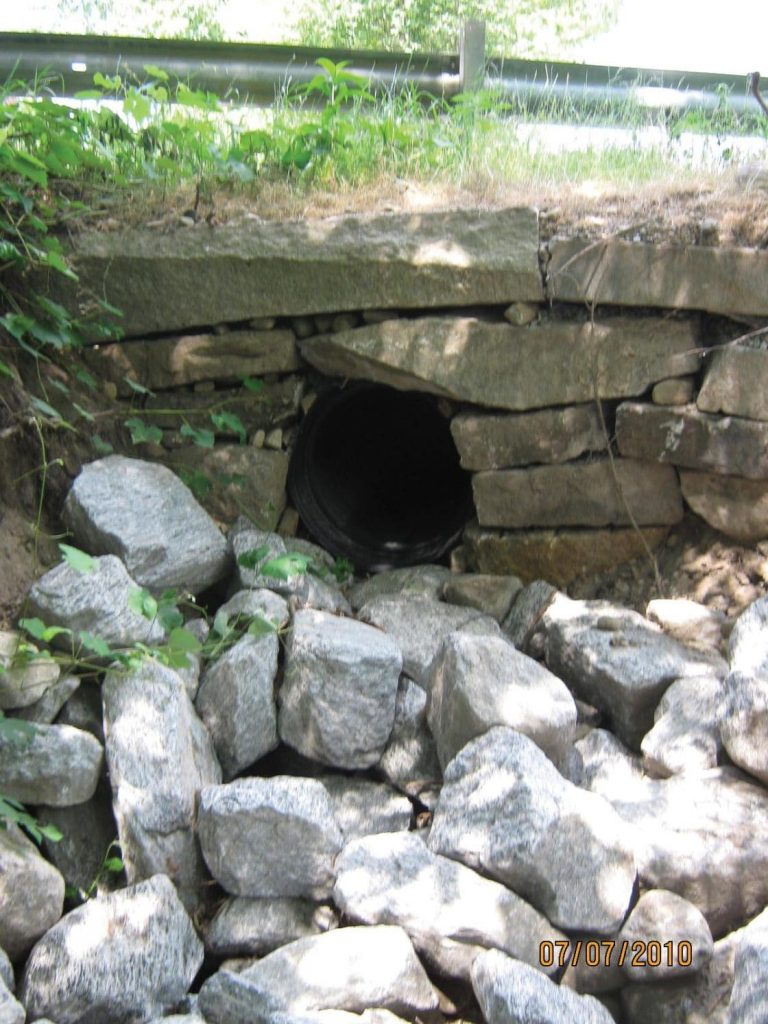
Tata & Howard provides ongoing stormwater engineering services to the Town of Leicester, Massachusetts in support of their status as a NPDES Phase II Municipal Separate Storm System (MS4) community. Work involves outfall mapping and inspection, Illicit Discharge Detection and Elimination, development of Annual Reports, and compliance with documentation and reporting components of the MS4 Permit.
In addition, Tata & Howard assisted the Town of Leicester Highway Department with mapping and inspection of stormwater outfalls and produced a unique record of each outfall, including photographs. Tata & Howard also developed a report summarizing the outfall inspections.
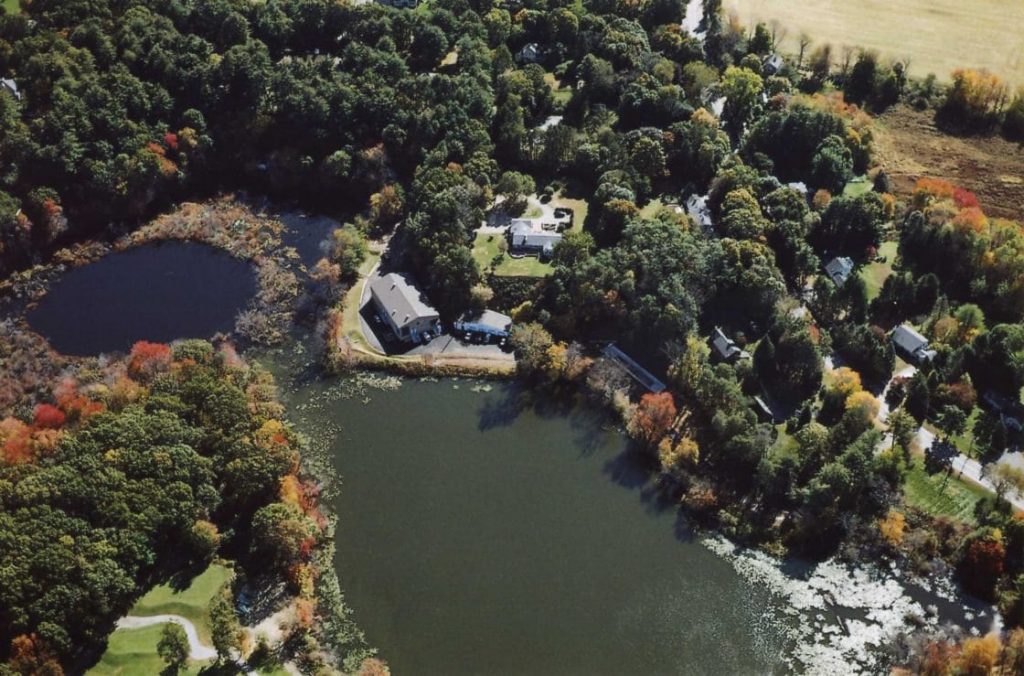
Tata & Howard completed pilot testing, design, permitting, bidding, and construction management services for the Town of Wayland’s Baldwin Pond Water Treatment Plant which included iron and manganese removal. The facility received MassDEP approval to go online and became Wayland’s first public building to receive an occupancy permit in the last 30 years. The need for the facility arose from high iron and manganese content in Wayland’s water. The facility also addressed any concern over the three Baldwin Pond wells which were under close scrutiny to determine if they were “under the influence of surface water.” The 7,500-square-foot, 1.5 million gallons per day, state-of-the-art water treatment facility was constructed to meet current and future regulations for many years ahead. The design included ozone oxidation, ultrafiltration membranes, waste recycle, and chemical feed for coagulation, pH adjustment, fluoridation, and disinfection. The treatment facility utilizes ozone oxidation and ultrafiltration to remove iron and manganese from the blended raw water from the three water supply wells. Although other constituents are also removed through this process, the basis of this plant is to optimize the removal of iron and manganese.
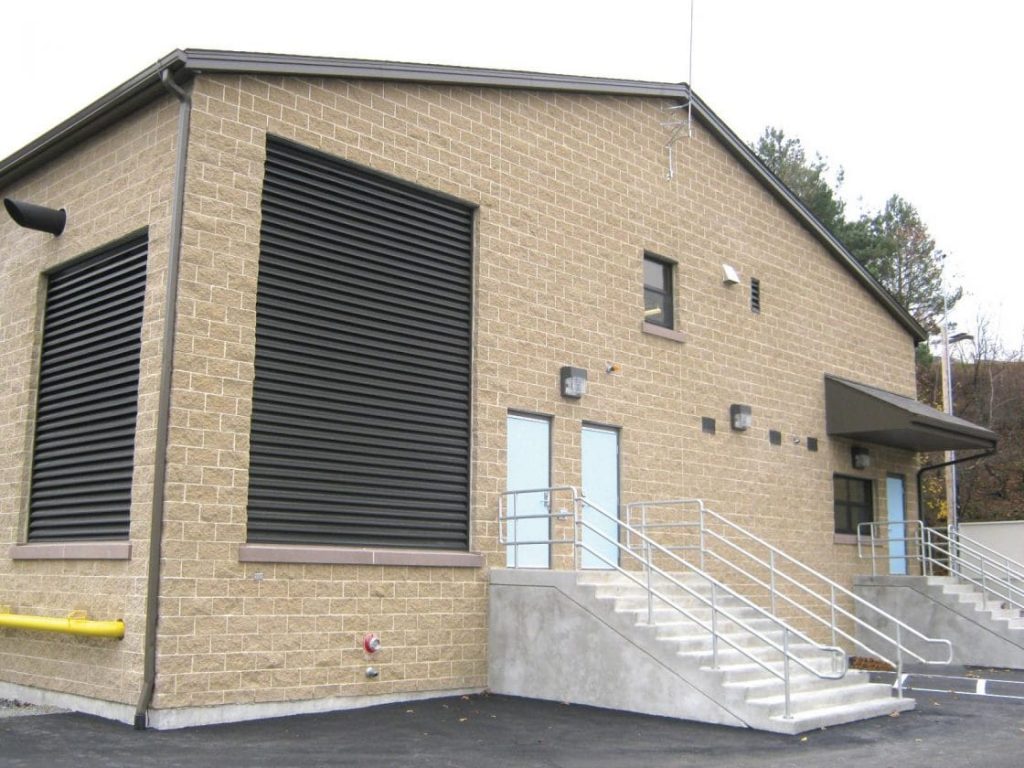
The Baldwin Pond Water Treatment Facility project was highly successful through good communication and teamwork between Tata & Howard’s construction management team, the general contractor Methuen Construction, and the Town of Wayland. With less than 1% of the contingency budget applied to change orders towards the end of the project, the Town was able to do additional work. The additional work included replacing raw water mains and upgrading the existing garage onsite. A dedication ceremony for the facility was held with Representative Scott Brown, and representatives from MassDEP, Methuen Construction, and Tata & Howard joining the Town of Wayland in commemorating the completion of the facility.
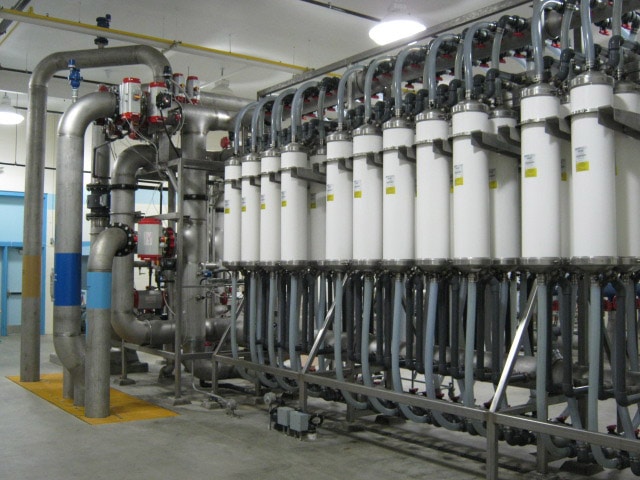
SaveSave
SaveSave
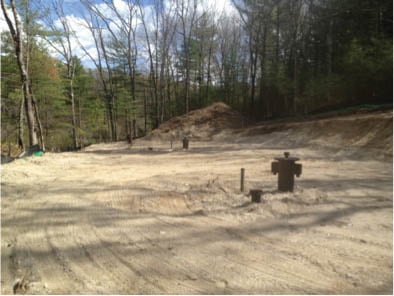
Tata & Howard provided engineering services to the Town of Upton to address a water supply deficit identified in the 1998 Water Distribution System Study and the 2011 Water Master Plan and Capital Efficiency Plan™, both conducted by Tata & Howard. The multi-faceted approach was recommended to mitigate the supply deficit included maximizing their existing supply sources and the development of a new wellfield.
The original Glen Avenue Wellfield consists of two groups of 12 2½-inch diameter tubular wells, pumped through an 8-inch diameter, cast iron main. The original pumping capacity of the Glen Avenue Wellfield is approximately 0.316 million gallons per day (mgd). Recently, the yield of the Glen Avenue Wellfield has declined to approximately 0.08 mgd during the summer months. Due to the decreased yield, the Town did not have adequate supply to meet existing water demands. Replacement wells were recommended by Tata & Howard to regain the permitted capacity of the source.
The project consisted of a test well investigation program to evaluate the feasibility of replacement wells and preliminary permitting with the Massachusetts Department of Environmental Protection (MassDEP). Once the test well program indicated that three 16” x 10” gravel packed wells could replace the yield of the existing tubular wellfield, Tata & Howard met with MassDEP to approve the concept prior to proceeding with the pump test proposal submittal.
The scope of services included conductance of a 48 hour pump test as required by MassDEP, permitting with the MassDEP, Army Corps of Engineers, the Natural Heritage Endangered Species Program and the Upton Conservation Commission. Work also included design of well screens, submersible wells pumps, pitless adapters, variable frequency drives (VFDs), transducers in each well and water main to connect the new wellfield to the existing pump station and electrical and signal wiring. The wellfield was metered with one single meter within the pump station. Tata & Howard provided construction administration services and post construction administration services for the project.
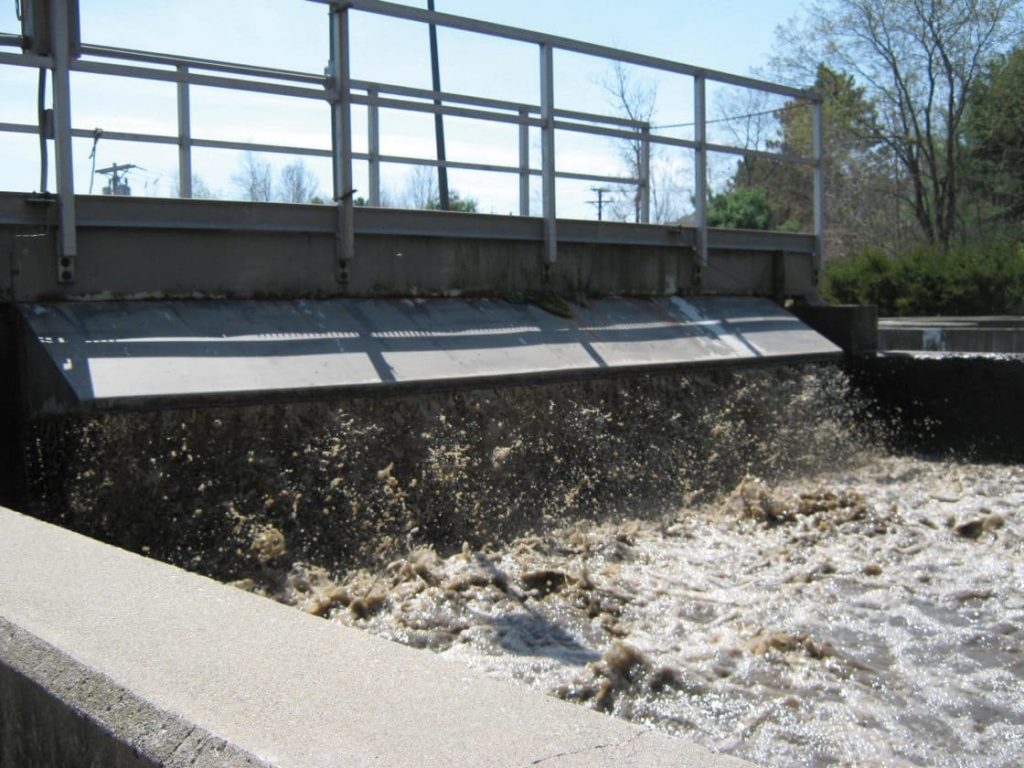
Tata & Howard assisted the Town of Winchester to meet the Collection, Management, Operation, and Maintenance (CMOM) requirements in the Town’s NPDES General Permit. The work consisted of the preparation of an outline for the Full Collection System Operation and Maintenance Plan, which included descriptions of staffing, management goals, information management, condition assessment, recent studies, and construction activities. Tata & Howard was also retained to prepare the Full Collection System Operation and Maintenance Manual, which included updating the outline, preparing a preventative maintenance and monitoring program, identifying sources of suspected overflows and back-ups, preparing a program for preventing I/I related effluent violations, and a public outreach program regarding I/I control.
Additionally, Tata & Howard has assisted the Town of Winchester with three phases of improvements to the Winchester Wastewater Treatment Facility (WWTF), I/I investigations, repair and rehabilitation of the sewer collection system to remove I/I, and securing funding to upgrade the WWTF and sewer collection system.
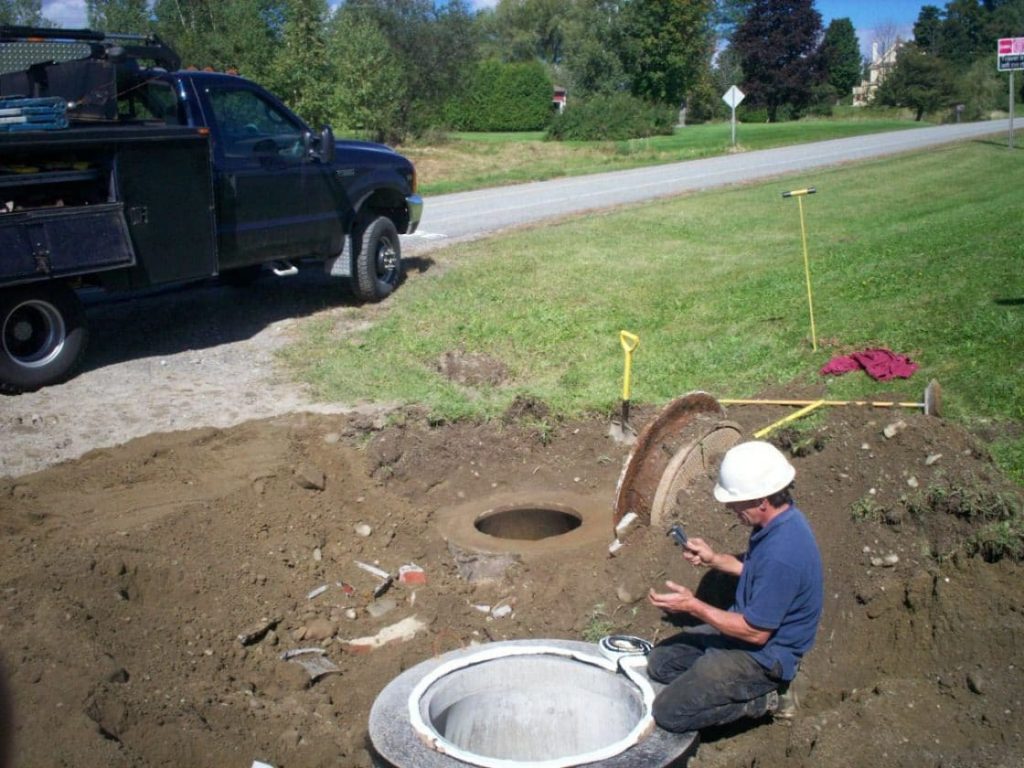
Tata & Howard provided engineering services for the evaluation, design, and construction of approximately five miles of pressure and gravity sewer to serve the mountain resort community of Jay, Vermont. The design also included the upgrade to air release structures for 4.5 miles of force main and upgrade of two pump stations, one a progressive cavity station.
In addition, Tata & Howard provided engineering services including planning, evaluation, design, permitting and construction services for the Troy-Jay wastewater treatment facility upgrade. The new headworks facility included screening and aerated grit removal and influent design for the force main/pressure sewer from the two towns and mountain resort. The treatment process was an SBR facility with tertiary filtration and UV disinfection for phosphorus removal.
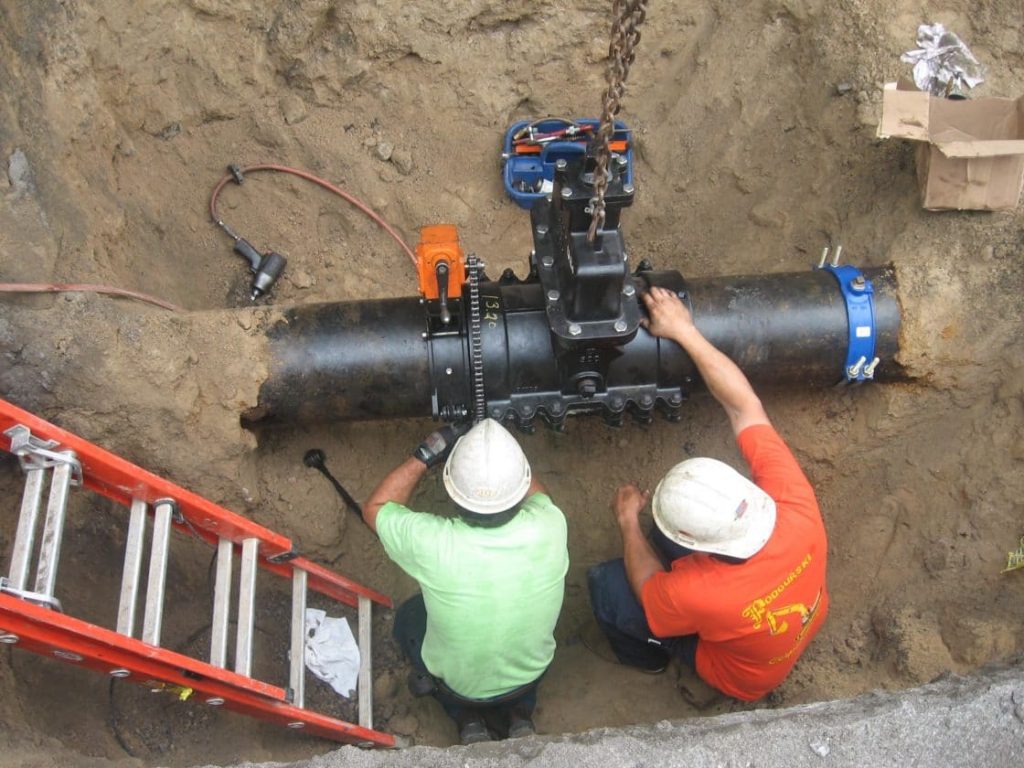
Tata & Howard is assisting the Town of Uxbridge with the design of 18,200 linear feet of 12-inch diameter water main on Route 122 from the Blackstone River to the Northbridge Town boundary. Work includes the preparation of design plans and specifications, permitting with the local Conservation Commission, MESA, and MassDOT, and the preparation of the Drinking Water State Revolving Fund (DWSRF) application, plans, and specifications checklist for the Route 122 water main design.
In addition, Tata & Howard provided design, permitting, and construction administration services for approximately 4,750 and 1,560 linear feet of 20-inch and 12-inch diameter water main, respectively, on Quaker Highway.
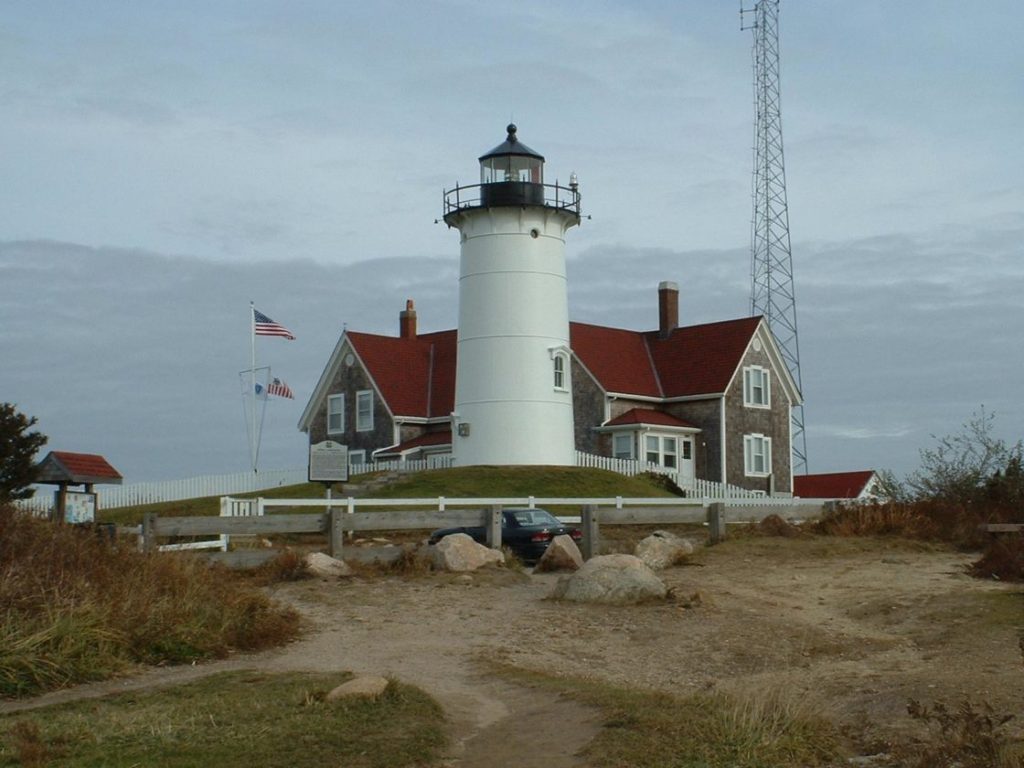
Tata & Howard, Inc. prepared a Water System Operations Plan for the Falmouth water system. As part of the Settlement Agreement between the Town of Falmouth and the Commonwealth of Massachusetts, the Town agreed to complete a Water System Operations Plan. The purpose of the plan was to evaluate seasonal demands, current source and storage tank operations and identify system and operational changes necessary to address distribution areas with low chlorine residuals.
The Town of Falmouth’s water distribution system consists of approximately 400 miles of water mains of various materials ranging in size from six to 24 inches in diameter. The Town has five active water supply sources including both groundwater and a currently unfiltered surface supply. Each source is treated with sodium hypochlorite for disinfection with the exception of Long Pond, which includes disinfection with chlorine gas. Falmouth’s water distribution system includes four water storage tanks and a Supervisory Control and Data Acquisition (SCADA) system to run and monitor operations.
The Falmouth Water Department faced a number of challenges, including the following:
- Maintaining regulatory compliance
- Meeting water demands
- Peak summer demands could only be met with Long Pond surface supply
- Long Pond is an unfiltered surface water supply
- Constant struggle to maintain treatment compliance and water quality
- Seasonal impacts from turnover or algae growth
- Lack of treatment to address taste, odor, and color can require severe curtailment in use of the supply
- Excessive source chlorine residuals needed to maintain distribution system residual chlorine concentrations, combined with source water organics results in elevated disinfection by-products (DBP – Total Trihalomethanes and Haloacetic Acids) which are regulated compounds
The study reviewed the challenges above and recommended changes to systems operations procedures to improve water quality. We used a hydraulic model to determine water age and look at its impacts on water quality. The plan was submitted and approved by Mass DEP.
Additionally, Tata & Howard completed the design of a 3.6 mgd treatment facility which utilizes air stripping and pressure filtration technology for the removal of iron, manganese and volatile organic compounds (VOCs). The facility includes an air stripping tower, three greensand filtration units, horizontal carbon contactors, chemical storage and feed facilities, gravel pack supply well, finished water storage, and backwash holding tanks.
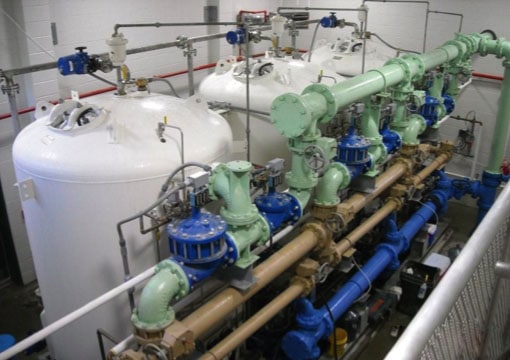
The Town of Canton had primarily been relying on water from the Massachusetts Water Resources Authority (MWRA) for a majority of its water supply needs since 2003 due to the poor water quality of their well supplies. In order to reduce the amount of water purchased from MWRA, the Town began investigations of water treatment options for iron and manganese removal. In 2005, Tata & Howard conducted a pilot test using water from Well No. 9 since it represented what was considered the worst water quality particularly with regard to iron concentration. The pilot testing indicated that oxidation with potassium permanganate followed by membrane ultrafiltration would be successful in reducing the elevated levels of iron and manganese to below the Secondary Maximum Contaminant Levels of 0.3 mg/l and 0.05 mg/l, respectively. Based on the results of preliminary pilot testing, a system from Koch Membrane Systems, Inc. (Koch) of Wilmington, Massachusetts was used.
In addition to the pilot study, Tata & Howard performed a feasibility study to determine the best location for a treatment facility for all of their well supplies. The recommended location for a single facility was a Town-owned property between Charles Drive and Pecunit Street adjacent to the Well Nos. 11 and 12 site, requiring the construction of approximately 14,500-feet of transmission main. Due to the significant cost of the transmission mains, the disruption of traffic throughout the Town from road excavation for construction of those mains, and the unknown cost of the required permitting activities for the transmission mains, the Town decided on the construction of two treatment facilities.
Tata & Howard provided engineering design and construction administration services for two water treatment facilities. Piloting for the projects was completed at two well sites. The Neponset Street Water Treatment Facility (WTF) has a design capacity of 2.53 mgd. The facility use ultrafiltration with chlorine dioxide for treatment. The Pecunit Street WTF has a design capacity of 0.95 mgd and uses LayneOx with chlorination for treatment. The two treatment facilities allowed the Town to reduce the volume of water purchased by the MWRA.
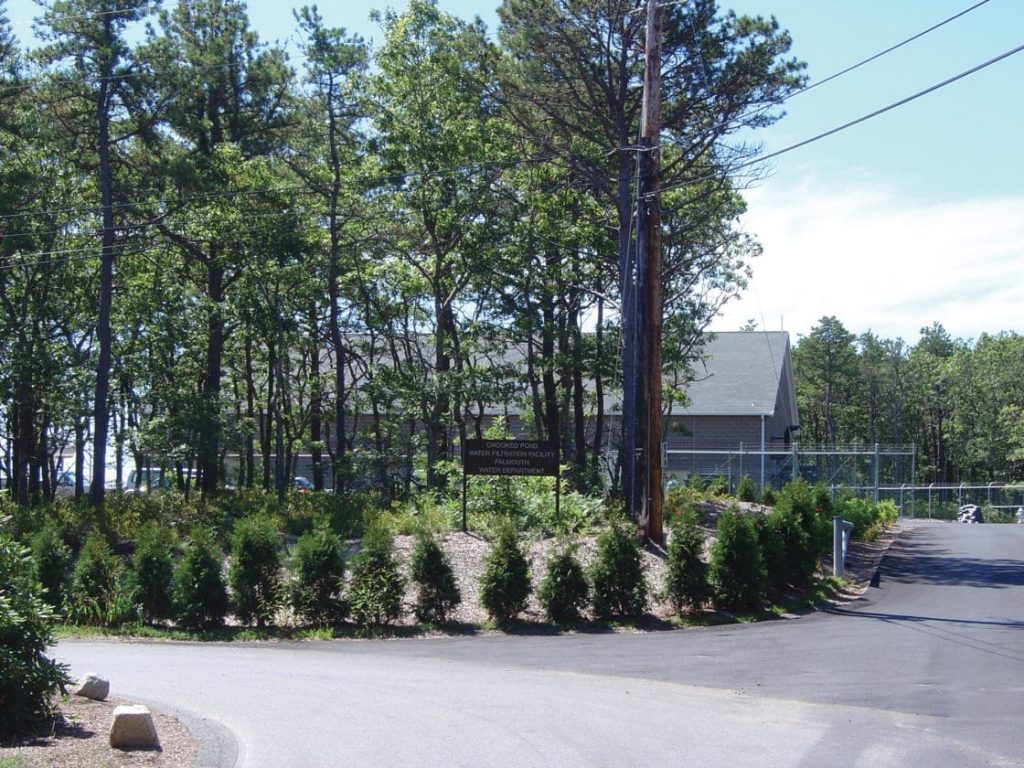
Tata & Howard completed the design of a 3.6 mgd water treatment facility which utilizes air stripping and pressure filtration technology for the removal of iron, manganese and volatile organic compounds (VOCs). The facility includes an air stripping tower, three greensand filtration units, horizontal carbon contactors, chemical storage and feed facilities, gravel pack supply well, finished water storage, and backwash holding tanks.
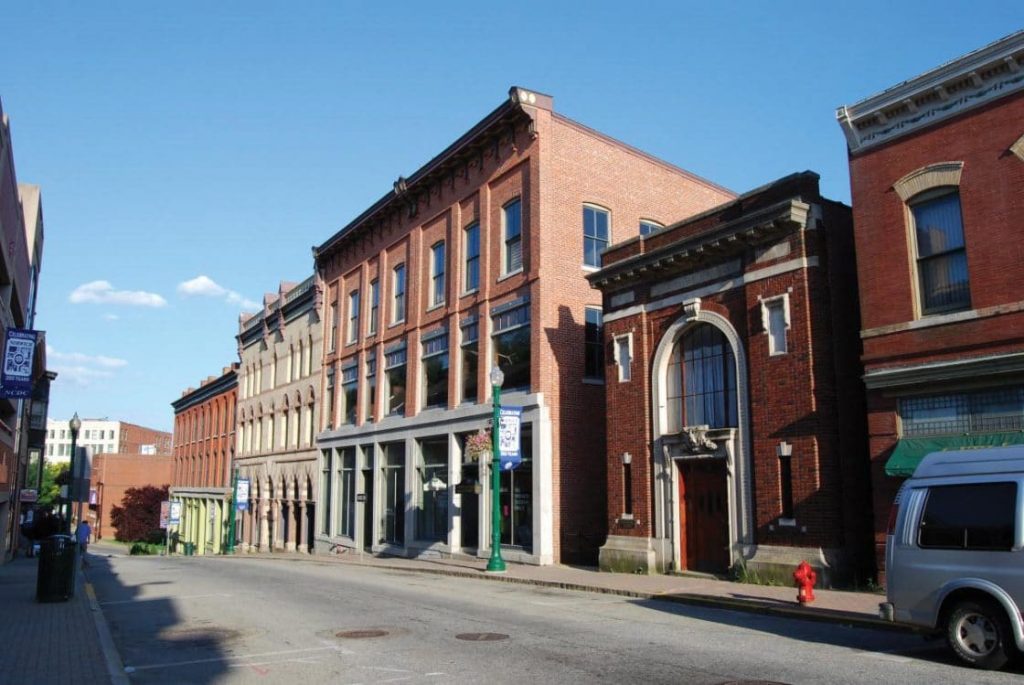
The NPU contracted with Tata & Howard for the design and construction of renovations at the Stony Brook Water Treatment Plant. The NPU was challenged by an apparent and relatively abrupt change in raw water quality as a result of a green algae bloom consisting primarily of chlorophyta beginning in the summer of 2010. The original project requested the replacement of the media in the filter clarifier units with buoyant media. T&H proposed an alternative approach to not replace the media but rather add a new unit operation to the plant. Our belief was that simply changing the media at this plant would not have appreciably changed the treated water quality. T&H recently completed piloting a Dissolved Air Flotation (DAF) system at the plant to improve treated water quality.
Tata & Howard prepared a pilot test plan for DAF Clarifier piloting at the Stony Brook Water Treatment Plant site and conducted one summer season of DAF clarifier and filtration piloting. A pilot study report was prepared, including water quality data, evaluation of the treatment system, chemical dosages, flow rates, conclusions, recommended process, and design criteria. As a part of the pilot study, bench scale testing was performed to examine the performance of coagulants and polymers at various dosages and mix rates for the best removal of disinfection by-product (DBP) precursors. The bench scale testing was performed simultaneously with the pilot test and results were incorporated into the pilot test program.
In addition, T&H prepared design drawings and specifications for a 4.0 mgd capacity DAF clarifier system to be added to the plant to remove algae and to remove a greater level of disinfection by-product precursors. Additionally, we assisted with bidding of the project and provided construction administration and resident observation services.












